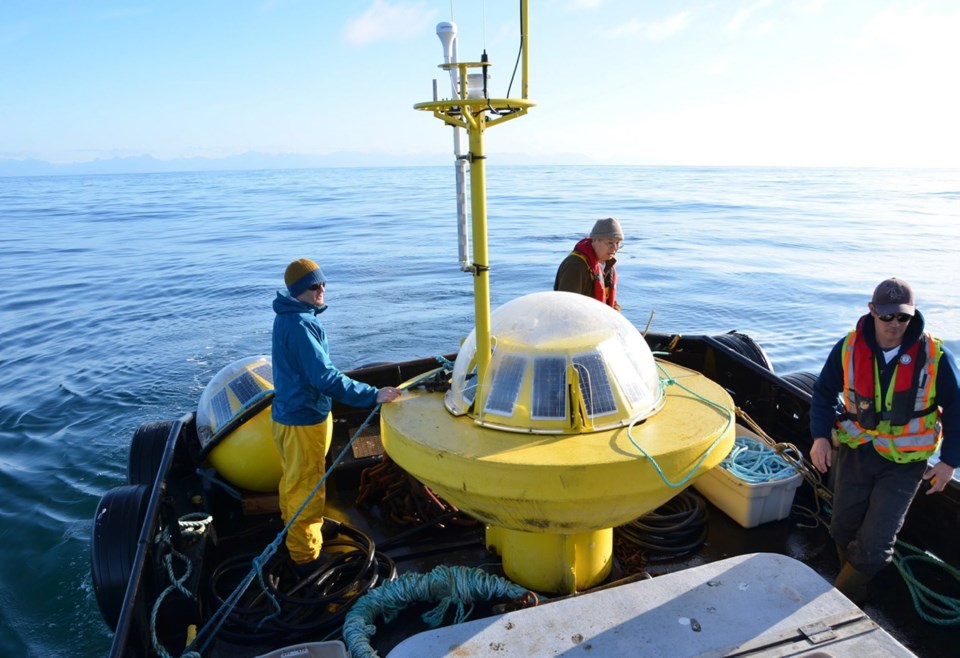B.C.’s twisting coastline of inlets and islands dotted with isolated communities offers a unique opportunity for wave energy developers, says a UVic engineer.
Bryson Robertson, adjunct professor of mechanical engineering at the University of Victoria, said with the possible exception of Chile, nowhere else in the world offers anything close.
“But they [Chile] don’t have the same heavily contoured coastline,” said Robertson.
“B.C. is unique in that it may become the first place in the world that wave energy can penetrate and become economically viable.”
He is also a project manager with the Institute of Integrated Energy Systems at UVic and spoke at a conference there Thursday.
Advocates say unlike solar or wind energy, waves never get blocked by clouds or stop entirely.
The energy-capturing devices can be large steel paddles sitting on the ocean bottom, flapping back and forth as waves pass. Or, they can be tethered, floating buoys going up and down on the tops of waves, driving pistons.
He believes wave energy is ready to move to the next step in the province. That would involve testing energy-capture devices in the ocean. Also important is observing how well the devices survive.
The west coast of Vancouver Island near Tofino and Ucluelet offers great testing opportunities. Testing can start with gentle waves in one spot and move to more active ocean in other spots.
One holdup is the lack of clear responsibility. “Who is the landlord of the ocean space?” asked Robertson. “Is it the feds? Is it the province? Is it First Nations?”
He has called on governments to prepare legislation and regulations. “This is an opportunity. So let’s be proactive.”
Coastal First Nations not only stand to benefit, they are a big part of the potential market. With many of them spending 50 cents per kilowatt-hour to generate electricity with diesel, the wave energy industry can compete.
B.C.’s isolated coastal communities are close enough together to offer a good energy market for wave technology. Robertson said on their own, each community is small. Added up, however, they can offer a decent-scale market.
“That’s not something that is replicated anywhere else in the world,” he said.
“At 50 cents per kilowatt-hour, wave technology should be able to compete.”
rwatts@timescolonist



